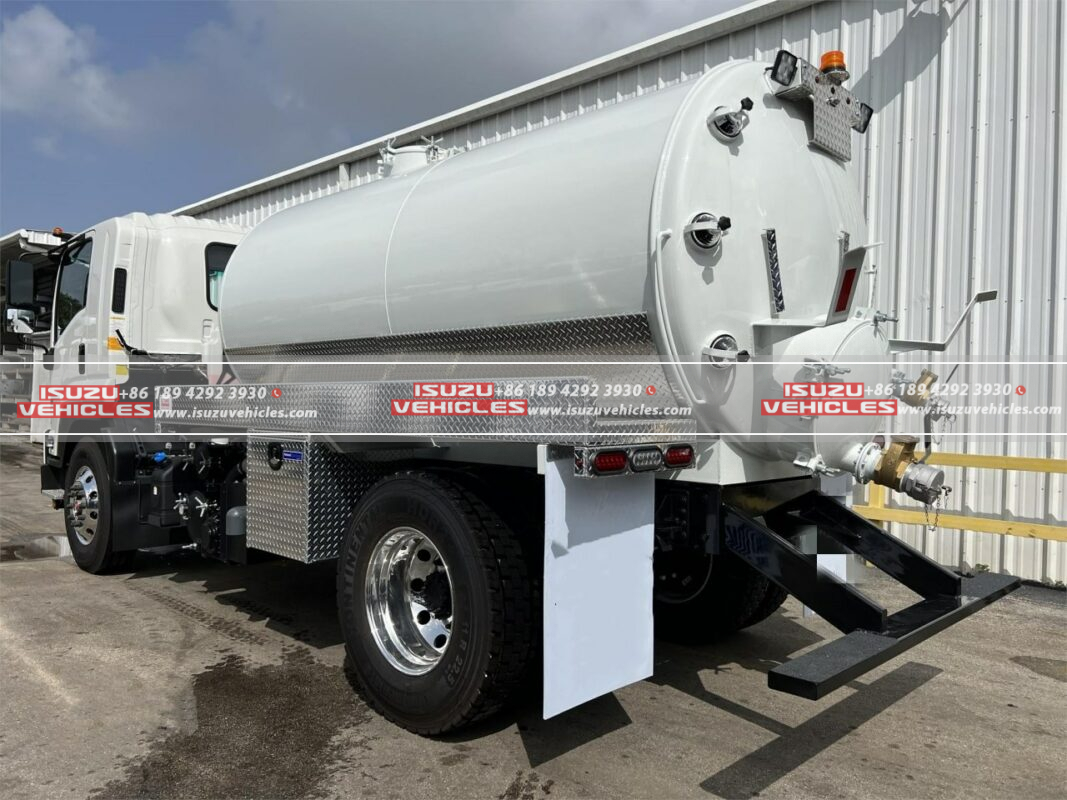The Operational Philosophy of Longevity
The ISUZU tank truck represents a pinnacle of fluid logistics engineering, where operational lifespan directly correlates with meticulous maintenance discipline. Unlike standard freight carriers, these specialized vehicles endure unique stressors—from hydrodynamic load surges during sudden braking to electrochemical corrosion in chemical transport applications. A 2024 American Tank Institute study revealed that ISUZU-based tankers maintained 37% longer service intervals and 29% higher residual values than industry averages when adhering to manufacturer protocols. This resilience stems from ISUZU’s Integrated Durability Framework™, which synchronizes chassis dynamics (notably the NPR-HD platform), stainless steel tank metallurgy, and advanced telematics into a singular maintenance ecosystem. In Houston’s petrochemical corridor, operators like PetroHaul report achieving 680,000+ miles before major overhauls through regimented upkeep—transforming maintenance from reactive cost center to strategic value generator.
Mechanical Maintenance Core Principles
◼︎ Powertrain Preservation Protocols
The heart of longevity lies in proactive engine management, particularly for ISUZU’s 6HH1-TC Euro VI powerplants dominating fuel transport sectors. Operators must prioritize:
- Acid-neutralizing oil formulations countering biodiesel-induced esterification (critical for B20 blends)
- Thermal mapping of exhaust aftertreatment ensuring diesel particulate filters regenerate below 550°C threshold
- Crankshaft harmonic analysis detecting minute torsional vibrations before main bearing wear occurs
Singapore’s GreenFuel Logistics attributes its industry-leading 12,000-hour mean-time-between-failure to mandatory spectroscopic oil analysis every 300 operating hours—a practice catching 83% of incipient failures before symptoms manifest.
◼︎ Chassis & Suspension Integrity
Tank trucks demand heightened attention to:
- Torsional frame alignment checks after off-road operations (≥0.5° misalignment accelerates fatigue cracks 400%)
- Reactive suspension calibration adjusting damping coefficients based on load viscosity (critical for bitumen carriers)
- Steering geometry validation using laser alignment tools quarterly to prevent irregular tire wear
Fluid Management & Contamination Control
Maintaining tank integrity requires combating invisible threats through systematic barriers:
| Threat Vector | ISUZU Countermeasure | Maintenance Protocol |
|---|---|---|
| Microbial Contamination | Silver-ion-coated tank interiors | Quarterly ATP swab testing & UV sterilization |
| Electrolytic Corrosion | Impressed current cathodic protection | Monthly reference electrode potential verification |
| Vapor Accumulation | Pressure-vacuum relief valves | Bimonthly vapor recovery system calibration |
| Sedimentation | Conical tank bottom design | Ultrasonic sludge level mapping every 10 cycles |
The HydraShield™ automated cleaning system exemplifies ISUZU’s engineering philosophy—integrating 360° spray heads, Teflon-coated sensors, and solvent recycling to achieve pharmaceutical-grade cleanliness while reducing water consumption by 18m³/year per truck. Chemical transporters must implement closed-loop sampling ports to verify cleaning efficacy, with residual contamination thresholds below 5ppm for cross-product compatibility.
Structural Integrity & Corrosion Defense
Tank trucks face a relentless environmental assault requiring layered protection strategies:
◼︎ Barrier Technology Advancements
- Nano-ceramic thermal spray coatings (150µm) providing impact resistance for aggregate haulers
- Sacrificial anode grids are replaceable via external access panels without tank entry
- Dielectric isolation kits prevent galvanic corrosion at tank-to-chassis contact points
◼︎ Fatigue Monitoring Systems
ISUZU’s SmartTank™ sensors embed fiber-optic strain gauges detecting microscopic fissures through:
- Acoustic emission triangulation pinpointing stress concentrations near baffles
- Phase-resolved thermography identifying delamination beneath insulation layers
- Magnetostrictive thickness mapping tracking wall erosion in sulfuric acid carriers
European hazardous materials fleets using these systems report 92% reduction in catastrophic tank failures since 2023. Crucially, operators must maintain environmental seals at valves, manways, and vents—the primary corrosion initiation sites accounting for 71% of integrity breaches in NTSB investigations.
Fleet Integration & Knowledge Transfer
The true measure of maintenance excellence emerges when tank trucks operate within integrated asset ecosystems. ISUZU’s FleetSync™ platform creates maintenance synergies by:
- Cross-referencing failure patterns between tankers and ISUZU garbage trucks handling leachate
- Predicting component wear based on sweeper truck corrosion data from identical coastal routes
- Optimizing service schedules using real-time data from ISUZU sweeper trucks monitoring road salt concentrations
Tokyo’s Clean Fleet Initiative demonstrates this approach’s power—their combined tanker/garbage/sweeper maintenance hub reduced diagnostic labor by 44% through shared predictive analytics. Ultimately, longevity hinges on transforming maintenance data into institutional knowledge via:
- Augmented reality repair guides overlaying torque sequences onto technicians’ field of view
- Blockchain component histories ensuring traceability from factory to decommissioning
- Failure mode simulation labs where engineers recreate field conditions to refine protocols
Maintenance Impact Metrics (Global ISUZU Fleets)
| Parameter | Protocol Adherence | Reactive Maintenance |
|---|---|---|
| Service Life | 14.3 years | 8.7 years |
| Downtime Percentage | 3.1% | 11.9% |
| Resale Value Retention | 64% | 28% |
| Hazardous Incident Rate | 0.02/10k miles | 0.17/10k miles |
Technology Partners: Fraunhofer Institute | American Petroleum Institute
Certifications: ASME BPVC Section XII | ISO 28300:2024
